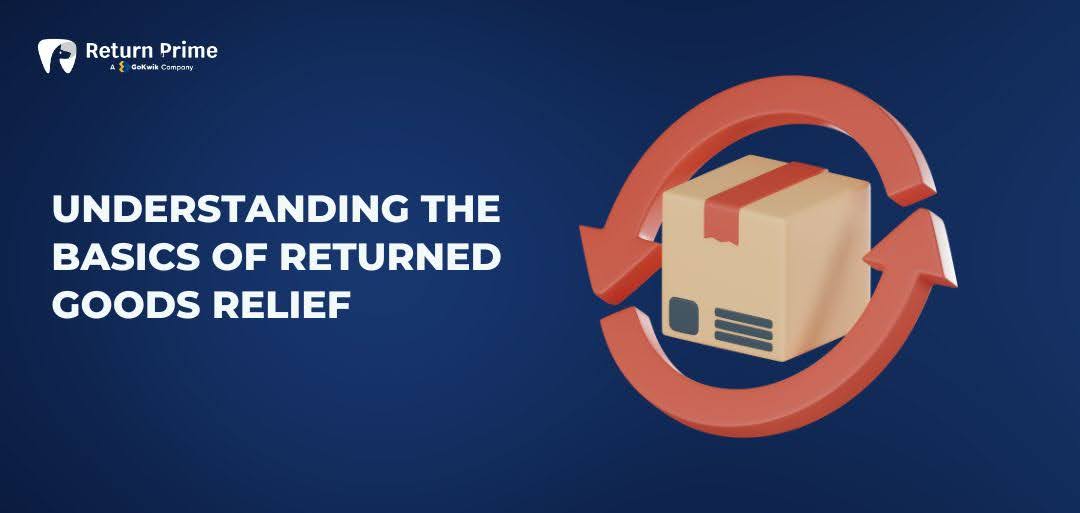How to Automate Warranty Returns Efficiently


Efficient warranty return processes play a big role in keeping customers happy and operations smooth. In the UK, 84% of online shoppers check a retailer's return policy before buying. A clear and easy process helps reduce complaints, builds trust, and keeps people coming back. However, manual handling of warranty returns can lead to delays, mistakes, and rising costs. That's where automation makes a difference.
When you automate warranty returns, you save time, cut down on errors, and speed up the process for your customers. It also frees up your support team to focus on other important tasks. With clear tracking and communication, your customers stay informed and satisfied.
In this blog, you'll learn how to automate warranty returns, what features to look for, and how to set it up for your business. Whether you're scaling up or solving delays, automation can help you move faster and keep customers loyal.
What are Warranty Returns and Why Does it Matter in Post-Sales Success?
Warranty returns are a key part of the post-sales experience. When managed well, they show that your brand values customer satisfaction even after the sale. They’re not just a backup for faulty products; they’re a way to build long-term trust and reduce churn. Here is what it does:
- Enhances Customer Trust
When returns are easy and fair, customers feel secure about their purchases. It shows your brand stands behind its products and values buyer peace of mind. This trust often leads to more referrals and repeat visits.
- Boosts Customer Retention
A simple return process means customers are more likely to shop again. They feel looked after, which increases long-term loyalty. It also encourages them to choose your brand over less flexible competitors.
- Reduces Operational Costs
When you automate warranty returns, you cut time and labour spent on manual tasks. Fewer manual steps mean faster processing and fewer mistakes. It also frees up your support team to handle more complex queries.
- Provides Valuable Product Insights
Each return gives data. Tracking common issues helps you improve product quality. You can identify faulty batches, misunderstood features, or packaging issues. This feedback loop can prevent repeat problems and improve customer satisfaction.
- Strengthens Brand Reputation
A brand with fair return practices is seen as honest and dependable. It builds goodwill and shows that customer experience matters beyond the sale. Happy customers are more likely to leave positive reviews and share their experiences.
Warranty returns aren’t just a checkbox; they shape customer loyalty, reduce costs, and boost your product quality. Brands that automate warranty returns are better equipped to manage these benefits efficiently. Now that you are well aware of automated warranty returns, let’s look at the most common challenges and how they can affect your returns process.
Challenges of Manual Warranty Return Processes
Manual warranty return processes can slow down support teams and frustrate customers. Without the right tools, managing these returns becomes messy, inconsistent, and costly. Here are the key challenges businesses face when relying on manual methods.
- Time-Consuming Procedures: Each return needs manual approval, tracking, and processing. The process delays resolution and clogs up customer support queues.
- High Error Rates: Manual data entry often leads to mistakes in product details or return eligibility. These errors can frustrate customers and increase returns-related costs.
- Poor Tracking and Visibility: Without a system in place, it's hard to track return status or view a clear timeline. Customers are left in the dark, and teams struggle to stay updated.
- Inconsistent Customer Communication: When communication isn't automated, updates are easy to miss or delay. It creates confusion and damages the customer experience.
- Resource-Intensive: Manual handling needs more staff, more time, and more follow-ups. It pulls focus from other important tasks and limits business growth.
- Data Silos: Information sits in different systems, support tickets, emails, and spreadsheets. It makes the process hard to get a full view of the return journey.
- Compliance Risks: Without standard processes, brands risk missing legal obligations or return deadlines. It can lead to disputes, bad reviews, or even fines.
These issues don't just slow things down; they hurt trust and take up valuable time. A better way is to automate warranty returns from start to finish. So, what features should a good warranty return automation tool include? Let's break it down.
Key Features to Look for in Automate Warranty Returns Tools

Choosing the right automated warranty returns tool can save time, cut costs, and improve customer satisfaction. However, not all tools offer the same features. Here’s what to look for when selecting a solution for your Shopify store:
- Automated Approval Workflows
Set rules to approve or reject warranty claims without manual checks. It speeds up processing and removes repetitive admin work.
- Real-Time Tracking and Notifications
Customers must stay informed at every step with automated email or SMS updates. It reduces support queries and builds trust.
- Smooth Integration with Existing Systems
The tool should connect with your order management, support, and logistics platforms. It keeps everything in sync and avoids double work.
- Comprehensive Analytics and Reporting
Access dashboards showing return trends, product issues, and customer feedback. It helps you make data-backed decisions and improve product quality.
- Customisable Return Policies
Set custom rules by product type, location, or return reason. It gives you flexibility and keeps processes consistent.
A good automated warranty returns tool doesn’t just simplify tasks; it helps your store run smarter. Now, take a look at how you can automate your warranty returns in a few simple steps.
Step-by-Step Guide to Automate Your Warranty Returns
Automating your warranty return process isn't just about installing a tool. It requires planning, setup, and regular review. Follow these simple steps to automate warranty returns smoothly and effectively:
1. Evaluate Current Return Processes
Start by mapping your existing return process. Look for delays, manual steps, and repeated customer complaints. It helps identify what needs fixing before you automate warranty returns.
2. Select an Appropriate Automation Solution
Choose a tool that matches your business size, return volume, and product types. Make sure it integrates easily with your Shopify store and other tools you already use to automate warranty returns efficiently.
3. Define Clear Return Policies and Workflows
Write down the rules for different types of returns, what's accepted, timeframes, and steps. Set up workflows for how each return type should be handled in the system you use to automate warranty returns.
4. Implement the Automation Tool
Install the software and connect it with your store, order system, and support tools. Migrate past return data if needed and test the process before going live.
5. Train Staff and Communicate with Customers
Show your team how the new system works. Update your return policy page and notify customers through email or order updates.
6. Monitor Performance and Optimise
Track the number of automated returns, approval speed, and customer satisfaction. Use this data to tweak workflows and keep improving how you automate warranty returns.
Automating warranty returns takes effort upfront but saves hours later. With the right setup, your team spends less time on admin, and your customers get faster support. Up next, let's cover a few best practices to help your return automation run even better.
5 Best Practices for Efficient Warranty Return Automation
Efficient warranty return automation needs more than the right tool; it depends on how well you use it. Following these best practices will help you automate warranty returns effectively and get the most out of your setup:
- Maintain Transparent Return Policies: Make your return terms clear, accessible, and easy to read. Avoid jargon. Tell customers what’s covered, what’s not, and how to start a return.
- Utilise Customer Self-Service Portals: Give customers the option to raise return requests on their own. A simple online form with tracking improves satisfaction and reduces support load.
- Regularly Update and Test Automation Workflows: Review workflows every few months to catch any gaps or delays. Test different scenarios to keep the system running smoothly as you automate warranty returns at scale.
- Analyse Return Data for Continuous Improvement: Track return reasons, approval times, and customer feedback. Use this data to improve product quality, returns handling, and customer service.
- Ensure Compliance with Legal and Regulatory Requirements: Stay up to date with consumer laws in the UK and other markets you serve. Keep your policies aligned to avoid penalties and maintain trust.
Good automation supports your team, saves time, and keeps customers happy. But it only works if it’s built on strong foundations. Whether you're just starting or refining your system, these tips will help you automate warranty returns with confidence. Now, let’s look at how Return Prime helps Shopify stores put all of this into action.
How Return Prime Helps Automate Warranty Returns Effectively?
Return Prime, a GoKwik company, is built for Shopify brands looking to simplify post-purchase processes. It offers a clear, reliable system for handling returns, exchanges, and refunds, helping brands build trust and boost satisfaction. With a 4.9/5 star rating on Shopify, it’s a trusted platform for businesses aiming to improve their returns experience.
Here’s how Return Prime helps automate warranty returns:
All return, exchange, and refund tasks happen in one place. It helps teams work faster and reduces errors. It also eliminates the need to juggle multiple tools, saving time and reducing confusion.
Automate warranty returns by handling repetitive steps in your return flow. Save time while improving speed and consistency. Customers get quicker responses, and your team can focus on complex issues.
Add custom rules to your products and customer expectations. Make your policy clear and fair. Apply different return conditions for different products without extra effort.
Encourage customers to swap instead of refunding. It keeps revenue in your store and improves retention. Smart suggestions help guide customers to similar or better products.
Give customers an incentive to stay loyal. Offer credits instead of cash to recover costs. You can also link these credits to future promotions to boost repeat purchases.
Keep customers informed at every step. Email and SMS alerts reduce support queries. Real-time updates improve trust and reduce follow-ups.
Track returns data to see what’s working. Use built-in tools to measure business impact. Spot trends, fix issues early, and make data-backed decisions.
Conclusion
Efficient warranty return processes are essential for customer satisfaction and smooth operations. Manual handling often leads to delays, errors, and poor communication, hurting your brand’s reputation and increasing costs. Automating returns helps reduce workload, cut errors, and give customers a better experience.
The right tool can make all the difference. Look for features like automated workflows, tracking, custom policies, and analytics. Following best practices, like clear policies, customer self-service, and regular system reviews, keeps your return process working well.
Return Prime makes it easy to automate warranty returns on Shopify. With smart automation, real-time updates, and powerful analytics, it helps your team work faster and keeps your customers informed and happy. It also helps you retain more revenue by promoting exchanges and store credits.
Is your returns process helping your brand or holding it back? Book a demo with Return Prime to see how it can support your growth.








.svg)


.svg)

